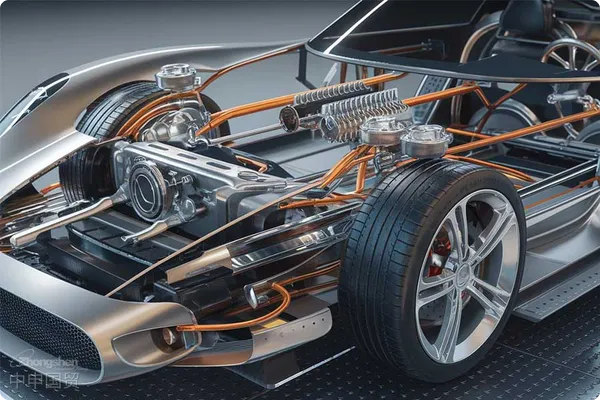- Shanghai Zhongshen International Trade Co., Ltd. - Two decades of trade agency expertise.
- Service Hotline: 139 1787 2118

As a core safety component of the automotive steering system, the import quality and compliance of tie rod ends directly affect vehicle handling performance and road safety. This article is based on 20 years offoreign tradeAgency experience, in-depth analysis of the core points of importing tie rod ends, forAutomotive partsThe importer provides end-to-end solutions.
1. Global Market Landscape and Product Certification Barriers
1.Regional Market Characteristics Analysis
- EU market: Mandatory ECE R90 certification (UN Regulation No. 90) required.
- North American market: Must comply with DOT FMVSS 571.109/571.119 standards.
- Emerging Markets in Southeast Asia: Gradual Implementation of the ASEAN Automotive Component Mutual Recognition System (ASEAN ACM)
- Chinese GB National Standard: Newly Added Ball Joint Dynamic Fatigue Testing Standard in 2023 (GB/T 3821-2023)
2.Cases of Authentication Bypass Risks
A certain German brand's ball joint failed to obtain certification in China.3CCertification (CNCA-C11-16:2020) resulted in $1.2 million worth of goods being held at Shanghai Port, saving a 30-day rectification cycle through pre-certification agency services.
II. Comprehensive Risk Control Model for Import Processes
STEP 1 Product Classification and Tariff Optimization
- HS Code Precise Positioning: There is a 15% tariff difference between 8708.99.9000 (parts for non-driving axles) and 8708.50.9000 (steering system parts).
- Application of RCEP Rules of Origin: Spherical Heads from ASEAN Member States are Eligible for a 5% Preferential Tariff Rate.
STEP 2 Compliance Review of Technical Documentation
- Required documents: Material Composition Analysis Report, Salt Spray Test Report (ASTM B117 Standard), Torque-Angle Characteristic Curve.
- Special Notice: The EU will implement the Carbon Footprint Labeling System (PEFCR) in 2024.
STEP 3 Logistics Solution Design
- Precision packaging requirements: The shock resistance coefficient must meet the ISTA 3A standard.
- Mode of Transport Selection: High-value products are recommended to be shipped viaAir Transportation+保稅倉分撥模式
III. Supply Chain Optimization Strategies (Practical Data)
By integrating a global procurement network, an importer achieved:
- Procurement costs decreased by 18%: Established a dual-source supply system in Turkey and Mexico.
- Inventory turnover rate increased by 40%: Implemented VMI (Vendor Managed Inventory) model.
- Customs clearance time reduced by 72 hours: Utilizing the fast-track channel for AEO Advanced Certification enterprises.
IV. Strategies for Developing Emerging Markets
1.New energyAutomotive Supporting Opportunities
Tesla Cybertruck steering system upgrade drives ball joint load standard increase to 8000N (traditional models 5000N).
2.Aftermarket Development Matrix
- Establish a three-tier distribution system for OES (Original Equipment Service), IAM (Independent Aftermarket), and DIFM (Do It For Me).
- Data-driven Marketing: Enhancing Parts Compatibility Accuracy Through VIN Matching Systems
V. Construction of a Risk Management System
1.Retain third - party notarized samples (Retain 3kg of metal samples per batch)
- Third-party inspection agency involvement: Cost-benefit analysis of on-site inspection by SGS/TüV
- Optimization of the Claims Process: Adopting INCOTERMS? 2020 DDP Terms to Mitigate Transportation Risks
2.Compliance Traceability Mechanism
- Blockchain Technology Application: Achieving End-to-End Traceability from Raw Materials to Terminal Repair Facilities
Industry Outlook: Supply Chain Restructuring in the Era of Intelligent Transformation
With the widespread adoption of Steer-by-Wire (SBW) technology, traditional ball joint products will evolve toward mechatronics. It is recommended that importers:
- Plan ahead for the ISO 26262 functional safety certification system.
- Establish a technical collaboration mechanism with autonomous driving enterprises.
- Invest in the construction of an intelligent warehousing center (equipped with an AGV sorting system).
Conclusion
The import business of tie rod ends has evolved from mere trading activities into a comprehensive competition involving technical compliance management, supply chain finance, and digital services. Professional.Import RepresentationThe value of commerce is reflected in:
- Reduce the product launch cycle by 30%.
- Reduce overall operating costs by 15%-25%
- Avoid over 90% of compliance risks
(The data in this article is sourced from: China's General Administration of Customs, ACEA European Automobile Manufacturers' Association, and the Auto Care Association of the United States.)
For personalized import solutions, you can contact our professional team to obtain the "Automotive Parts Import Compliance White Paper" and the tariff optimization calculation model.
Related Recommendations
? 2025. All Rights Reserved. Shanghai ICP No. 2023007705-2  PSB Record: Shanghai No.31011502009912
PSB Record: Shanghai No.31011502009912









